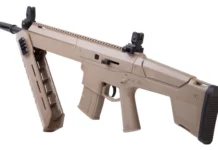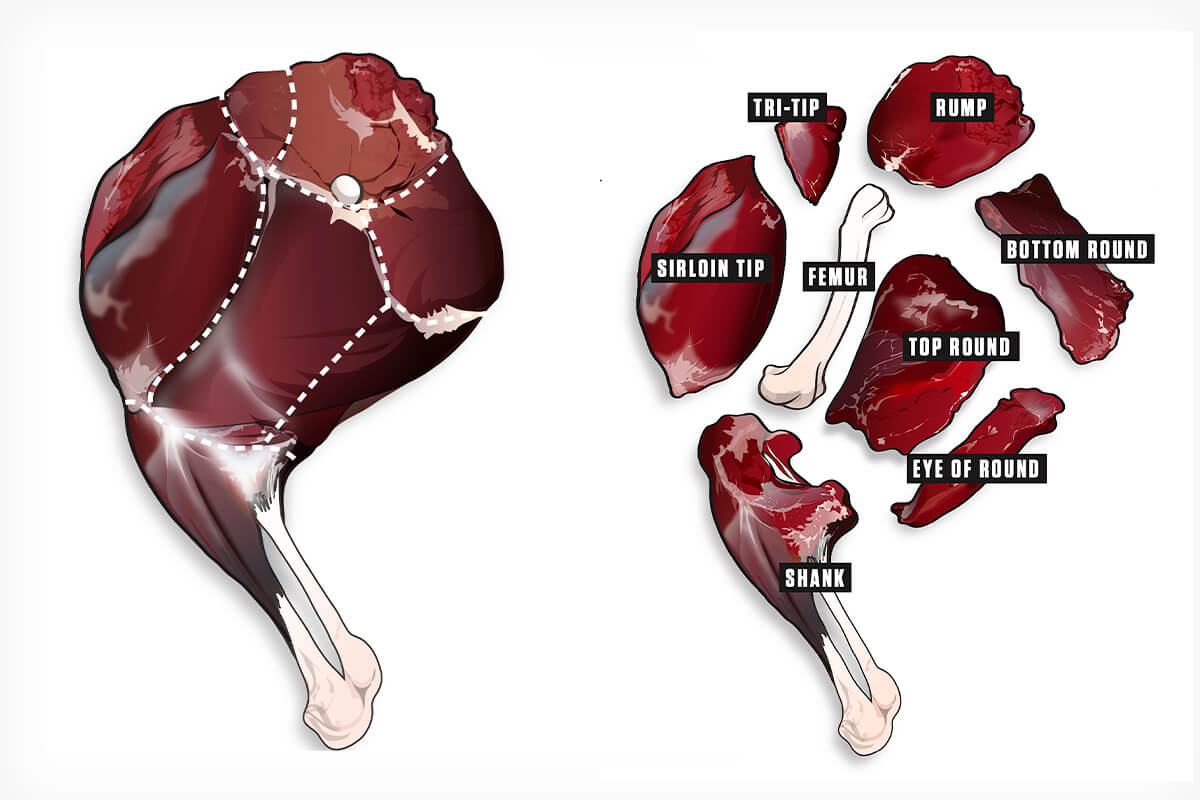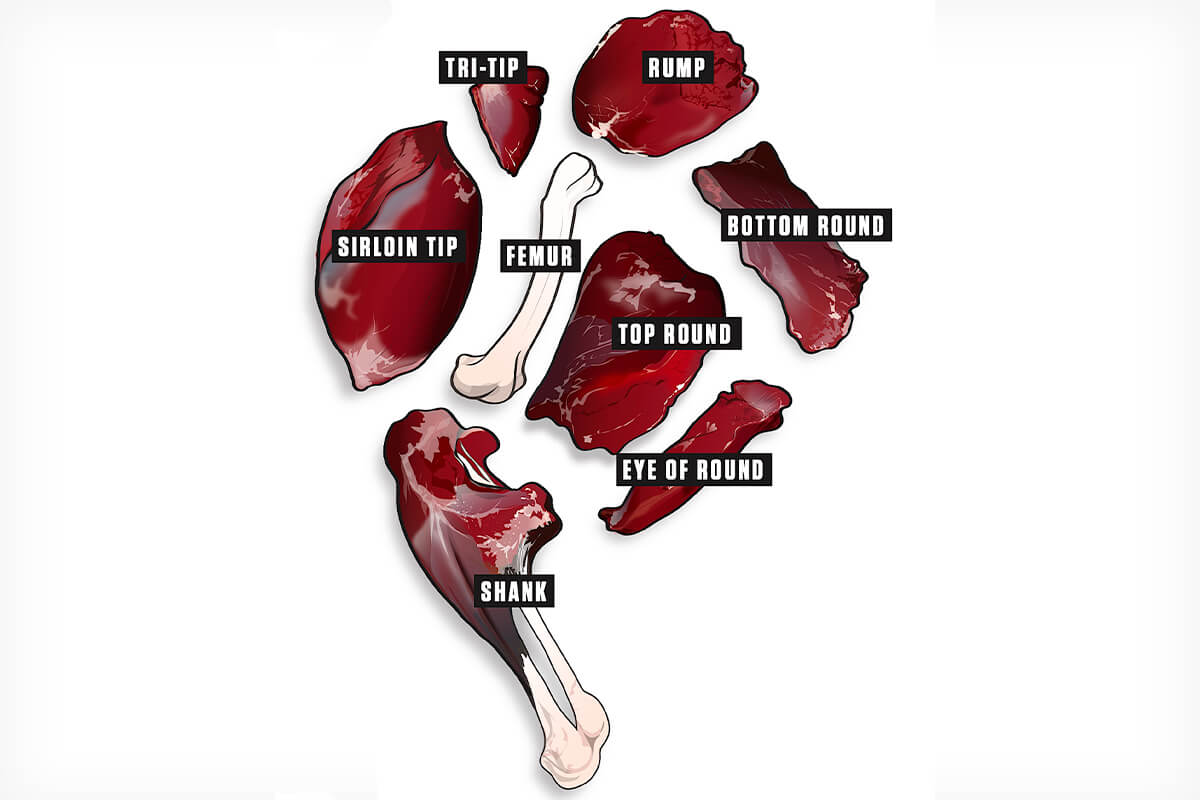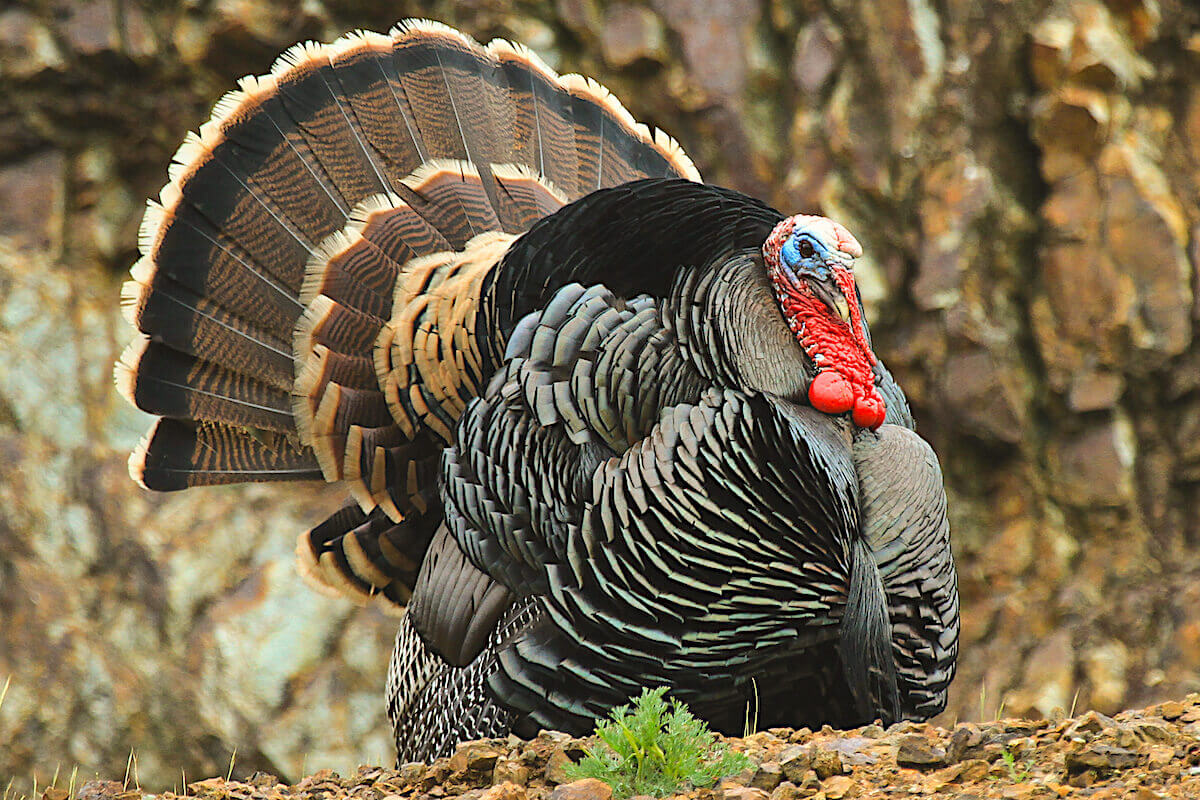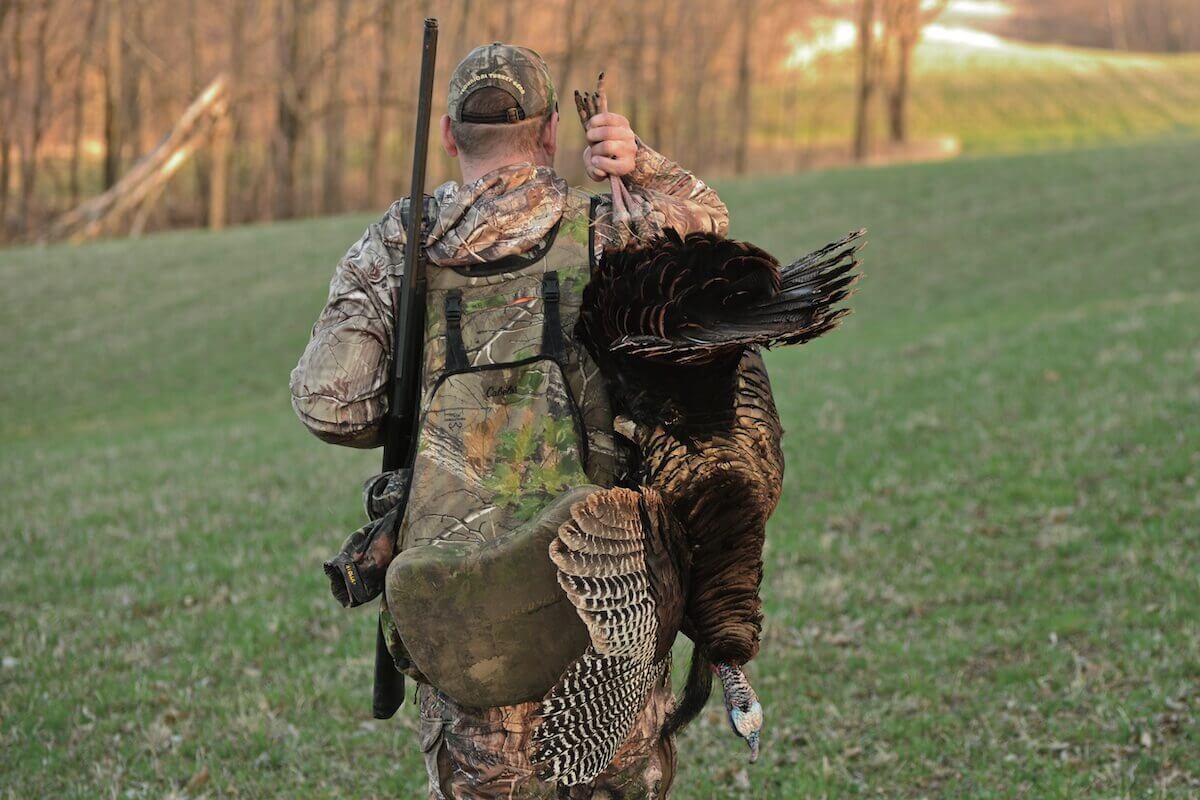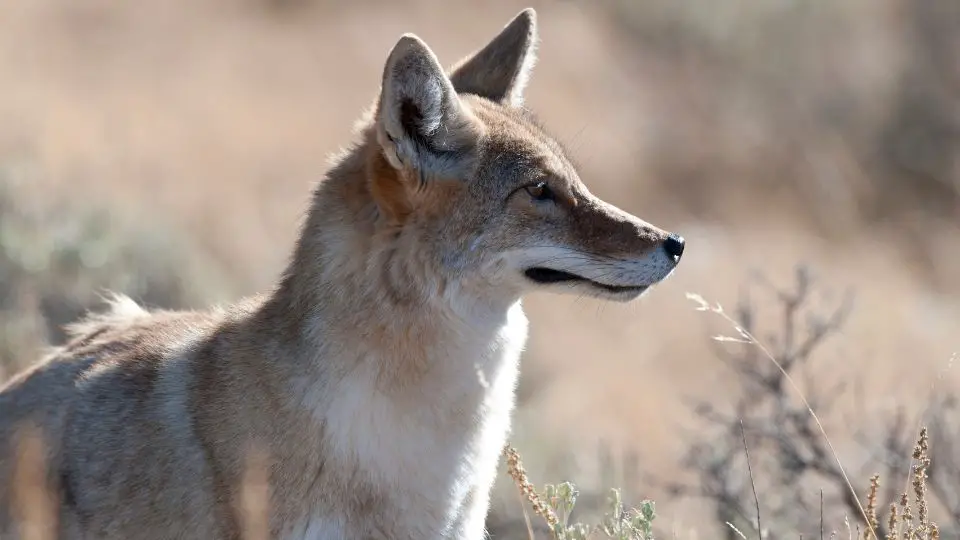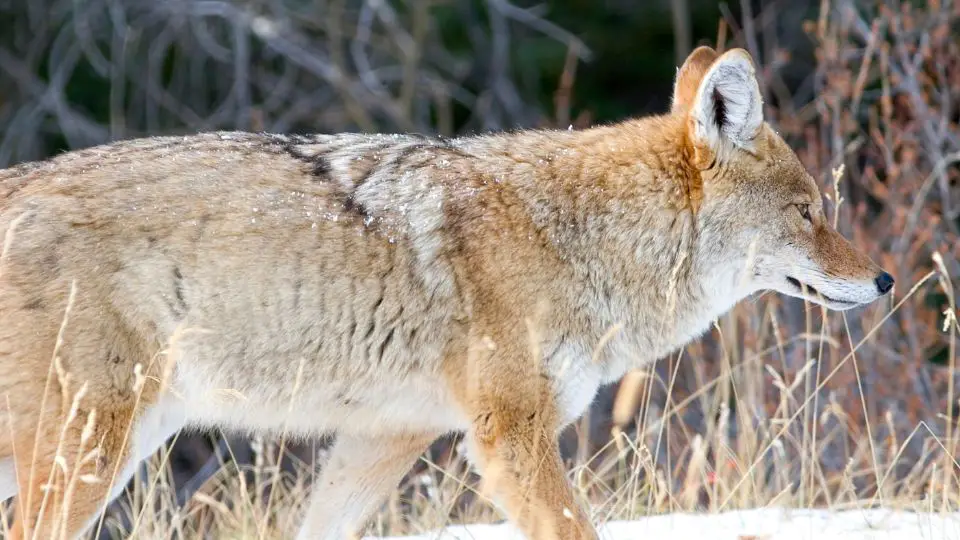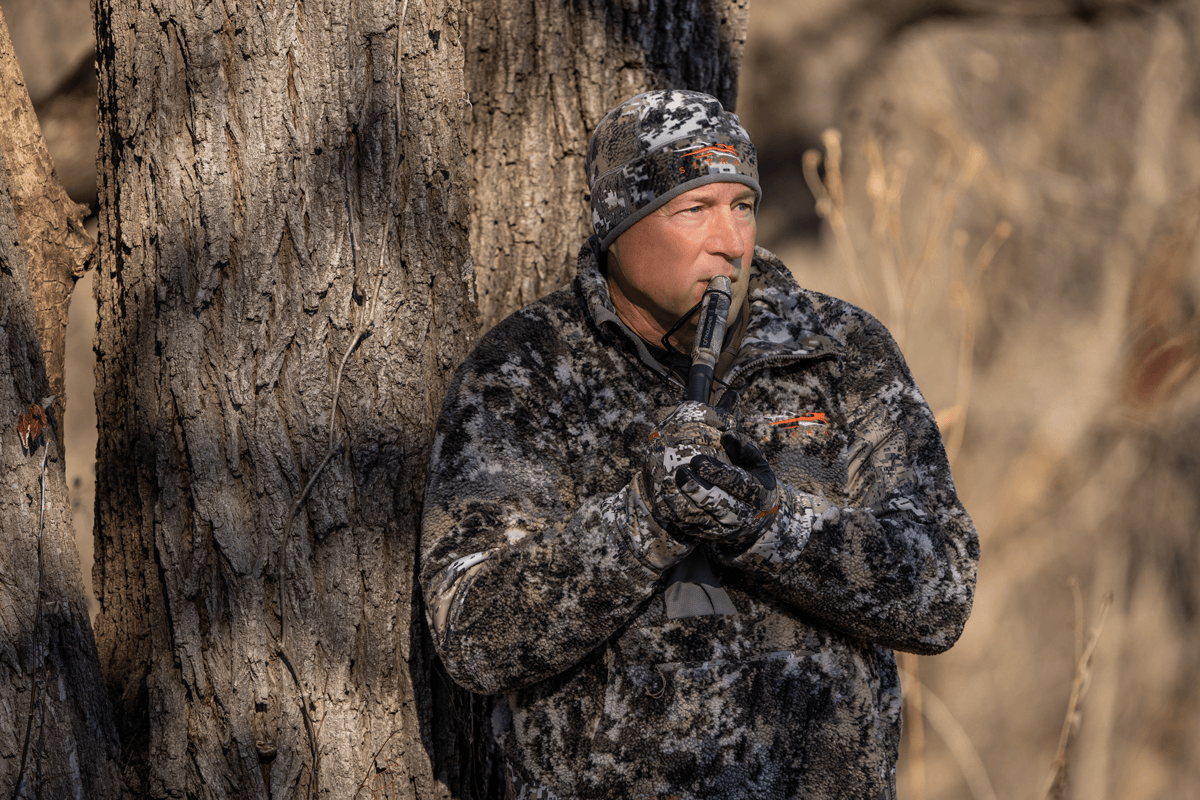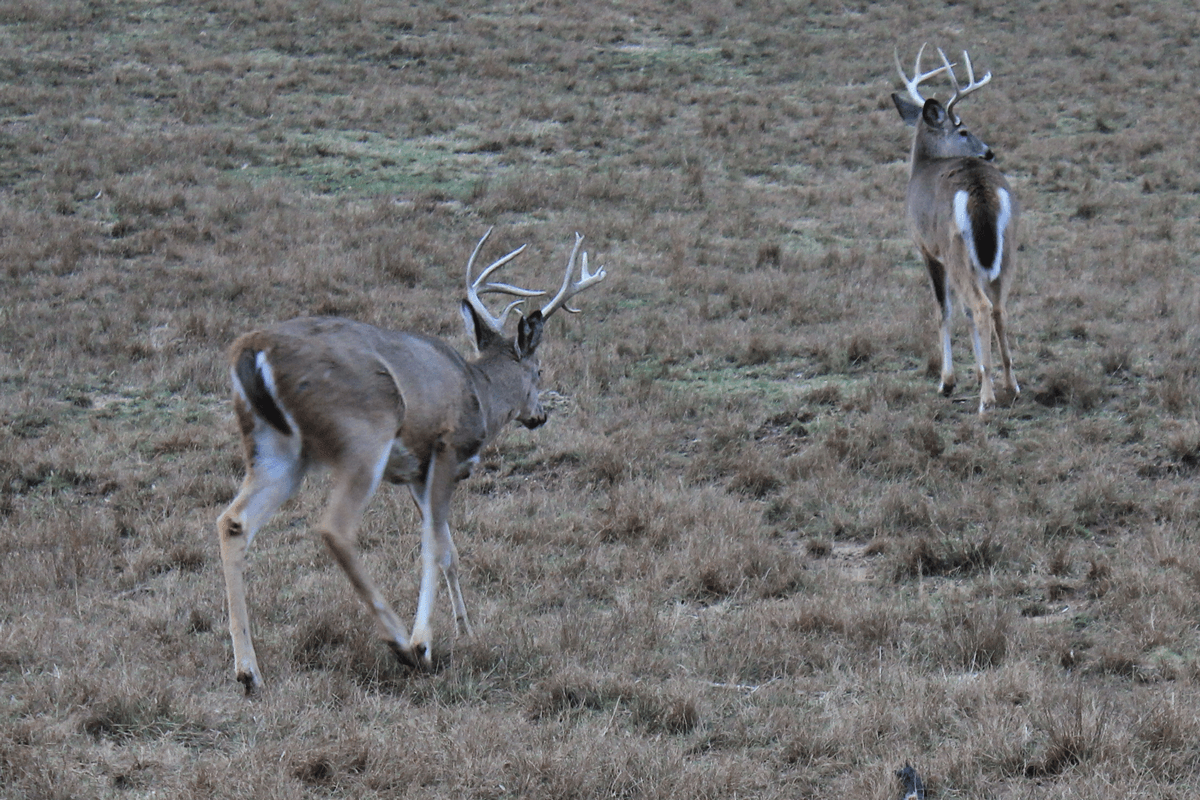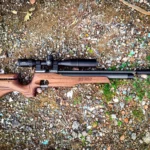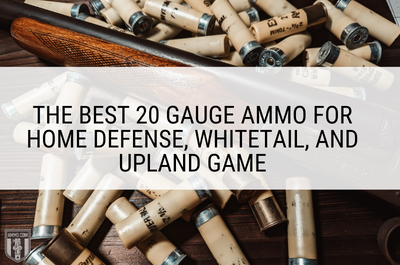
The venerable 20 Gauge is an often-underrated round, but the truth is it’s still an excellent option for sport shooting, hunting upland game or deer, and even home defense. It’s also a great option for new or recoil-sensitive shooters looking for something with less recoil than a typical 12 gauge.
These days, there is a plethora of great 20 gauge ammo choices out there for us to use, so much so that choosing the right one from all the ones available can actually be a little difficult.
We’re going to fix that.
Below you’ll find all of the best 20 gauge ammo options out there today. We’ve got picks for hunting (bird and buckshot), trap/skeet shooting, having fun at the range, and even self-defense. If you simply can’t wait, the best 20 gauge ammo overall is Winchester Super-X #3 Buckshot.
If you’re new to 20 gauge ammo and want to learn more about how to pick the best ammo for your shotgun, check out our Buyer’s Guide HERE.
Otherwise, keep reading because we went through a lot of 20 gauge shotgun shells to get this comparison done, so let’s dive right in.
Top 5 Best 20 Gauge Ammo Picks
1) Winchester Super-X #3 Buckshot – Best Overall
2) Winchester Defender #3 Buckshot – Best for Self-Defense
3) Federal Premium TruBall Rifled Slug – Best Slug Ammo
4) Remington Premier TSS #7 Shot – Best Turkey ammo
5) Federal Game Load Upland #7-1/2 Shot – Best for Upland Game
Best 20 Gauge Ammo Overall
Winchester Super-X #3 Buckshot
Specs
- Shot Load: 20x #3 Buckshot
- Length: 2 ¾”
- Muzzle Velocity: 1200 fps
Pros
- Very affordable
- Available in bulk
- Variety of shot loads available
Cons
- Patterning less consistent
- Might not cycle as well in gas or inertia-operated guns.
Why We Chose It
Whether you’re blasting clays, hunting on the cheap, or just stocking ammo for the end of days (which feels more and more like it could be any day now) it’s hard to go wrong with Winchester Super X.
Winchester offers a variety of shot loads from target loads/birdshot to slugs and high-brass buckshot. We’ve chosen the latter option here but really they’re all solid options you can buy cheap and stack deep.
The 20 gauge buckshot in particular is a good budget hunting or home-defense option that’s unlikely to let you down, though it does lack a little bit when compared to higher-end ammo that’s more tailored for defense or deer hunting.
Still, Super-X is plentiful, affordable, and more than sufficient for most tasks. And it’s the best on this list for turning money into noise at the range, which is a valuable attribute too. This is by far the best 20 gauge ammo for target shooting you’ll find.
Best 20 Gauge Ammo For Home/Self-Defense
Winchester Defender #3 Buckshot
Specs
- Shot Load: 20x #3 Buckshot
- Length: 2 ¾”
- Muzzle Velocity: 1,145 fps
Pros
- High-Velocity
- Ideal Self-Defense Load
- Copper Plated
Cons
- More expensive than standard buckshot
Why We Chose It
12 gauge shotguns may be the default scattergun choice for home defense, but the humble 20 gauge makes for a great home defense shotgun too, especially with modern ammo shooting a plated payload
Winchester Defender is a high-brass, copper-plated buckshot round available in segmented and rifled slugs as well as #3 buckshot depending on your needs and whether you’re worried more about longer or shorter ranges.
We’ve chosen the buckshot option here because it offers a good shot size, and less recoil than some other roughly equivalent 20 gauge shells out there. Twenty #3 buckshot pellets are basically the equivalent of emptying a full magazine of handgun ammo with a single trigger press, so this is more than enough for close-range threats.
It has an advantage over traditional deer hunting loads because of that harder copper plating that makes it more akin to a steel waterfowl load, albeit with much larger pellets. We didn’t get the recoil gauges out, but it also seems to have lower felt recoil than some other defensive options.
Best 20 Gauge Slug Ammo
Federal Premium TruBall Rifled Slug
Specs
- Bullet Weight: 328gr TruBall Hollow Point Slug
- Muzzle Velocity: 1600 fps
- Length: 2 ¾”
Pros
- Inexpensive
- Very High Velocity
- 1.4” groups at 50 yards
Cons
- Non-plated/jacketed lead projectile
Why We Chose It
For slugs, you have quite a few options but our favorite is the Federal Premium TruBall Rifled Slug. This is a great slug option for smoothbore barrels and is perfect for any medium-sized game or even self-defense in a pinch. A ¾ oz lead slug is going to make anything from a whitetail to a home invader take notice pretty quickly.
Federal uses a plastic ball (the TruBall in question) to lock the slug into the wad securely, which helps to firmly center the slug in unrifled barrels which translates into a big increase in downrange accuracy. It also helps the wad and slug to separate cleanly at the muzzle.
This is a great option for anyone that wants more versatility out of a smooth-bore 20 gauge barrel and is perfect for virtually any application that calls for a slug.
Best 20 Gauge Turkey Load
Remington Premier TSS 20 Gauge Ammo
Specs
- Shot Load: 1.5oz #7 or #9
- Length: 3
- Muzzle Velocity:1,100
Pros
- High-Velocity
- 18g/cc Weight
- Tungsten Super Shot Payload
Cons
Why We Chose It
Remington’s Premier TSS is a favorite with turkey hunters that want to make every shot count due to its tight pattern and ultra-dense shot load. The specially-designed, ultra-dense tungsten pellets hit hard and make it easier to go with smaller (and more) shot and still get the same energy downrange due to the increased mass.
Mass x velocity in this case equals more dead birds than you get with a standard lead shot as these tungsten pellets are more than 50% the density of your average turkey load.
It is expensive, but if you’re like me you aren’t bagging birds left and right, so making every shot count matters more here and the extra expense is worth it. For a 20 gauge load, this is especially worth it even at short ranges.
Check out our available stock of Remington 20 Gauge Slugs or Fiocchi 20 Gauge ammo for more options.
Best for 20 Gauge Ammo for Upland Game
Federal Game Load Upland #7-1/2 Shot
Specs
- Shot Load: 7/8 oz #7-1/2
- Length: 2 ¾”
- Muzzle Velocity: 1,210
Pros
- Low recoil
- Tight patterns
- Affordable
Cons
- Lead shot not allowed in all areas
Why We Chose It
The Federal Game Load Upland #7-1/2 is an excellent choice for do-all upland game load that won’t break your budget. These 20 gauge shells produced a nice, tight pattern in our hands and were extremely effective against quail, dove, and any other upland game that dare cross our path.
Packed into a nice, compact 2 ¾” shell length, Federal Game Loads had slightly less recoil than other offerings from Federal like their Vital-Shok, Power Shok, Hevi-Shot, and Top Gun. These game loads also proved to be a great option for sporting clays, as we had a great afternoon exploding clay pigeons with them.
The only downside to these game loads is that they are loaded with lead shot, which is prohibited in some areas. However, Federal has steel shot Game Loads if you need them, but for the price you simply cannot beat the classic #7-1/2 lead shot payload Federal offers.
Parting Shots
There are a ton of great options out there for 20 Gauge ammo, and hopefully, we’ve given you a good idea of what’s available and where to start your search.
Anyone going after larger game birds might be interested in Remington Premier TSS while anyone looking for a low-recoil self-defense option should check out the Winchester Defender line. Budget-wise, it’s hard to beat good old Winchester Super-X in either birdshot or buckshot loads.
And of course, there are other great options out there that we haven’t covered here, so be sure to check out our full range of 20 Gauge ammo to see if there’s something else that might be better suited to your specific needs.
Don’t forget to check out our Hornady 20 Gauge Slugs page for more slug options.
20 Gauge Ammo Buyer’s Guide
Congratulations on your new 20 gauge shotgun! I promise you are going to fall in love with this scatter gun as all the different varieties of 20 gauge ammo offer a ton of versatility without the punishing recoil of a 12 gauge.
No matter if you got a classic pump action like a Mossberg 500 or beautiful Benelli 828 Over/Under, we can help you pick the best shotgun loads for your new, favorite 20 gauge.
Below is our Buyer’s Guide to help you understand how to pick the right shotgun ammo for your new 20 gauge.
What’s a Gauge? Shotgun Bore Size Explained
If you’re familiar with shotguns, you’ll know that a lower gauge means a bigger caliber. However, if you’re new to shotguns or firearms in general, this can be a confusing concept to grasp.
Handgun and rifle calibers are defined by their internal bore diameter. A 40-caliber handgun has 0.40 inch diameter bore. This means the bigger the number, the bigger the bullet the gun can fire. However, shotgun gauges are determined by a more archaic system.
Gauge is determined by the number of lead balls with the same diameter as the barrel that add up to one pound.
So, for 20 gauge shotguns, it requires 20 lead balls with a 0.615 inch diameter to equal one pound. To put this into perspective, a 12 gauge shotgun has a 0.729” diameter bore.
Although this is really technical, just remember that for shotguns, a higher gauge corresponds to a smaller bore diameter.
Rifled vs Smooth Bore: What Slugs to Buy?
When it comes to deer hunting, you simply cannot beat a slug for pure stopping power and terminal performance. And although everyone seems to be gushing over their beloved 12-gauge deer guns, the 20-gauge shotgun is an extremely effective whitetail terminating machine.
Shotgun barrels come in two options, smooth bore or rifled. Smooth bore shotguns have no internal rifling and are the more classic design. Rifled barrels have rifling similar to handguns and centerfire rifles that help stabilize slugs by introducing spin to the projectile.
However, purchasing slugs for your new 20 gauge venison harvester can be confusing as there are two varieties available: rifled and sabot slugs. And understanding which shotgun ammo goes with your barrel is critical for downrange performance.
Rifled slugs are designed for smooth bore shotguns.
These slugs have rifling on the projectile that helps the slug begin rotation in the barrel. Rifled slugs shout NOT be used in a rifled barrel as this can cause leading and will negatively impact accuracy.
Sabot slugs are essentially a large bullet fired from a shotgun. The bullet is held in a plastic cup that falls off after the slug leaves the barrel. Sabot slugs are excellent for long range shots as the traditional bullet design is considerably more aerodynamic than a rifled slug.
Sabot slugs are used in rifled barrel shotguns.
Sabots can be safely fired from smooth bore shotguns but you will likely find they are considerably more accurate when fired from a rifled barrel.
Birdshot vs Buckshot: Shot Size Explained
The difference between birdshot and buckshot is the size of projectiles (shot/pellets) loaded into the shotshell and their penetration ability.
Buckshot fires larger pellets in lower numbers while birdshot fires smaller pellets in much higher quantities. Buckshot loads have high penetration while birdshot typically have lower penetration ability.
Read more about buckshot and birdshot here: Buckshot vs Birdshot.
As its name implies, birdshot is primarily designed for hunting birds like quail, grouse, pheasant, duck, goose, and even turkey. However, birdshot is capable of small game hunting and is quite capable against rabbits, squirrels, and even snakes.
Although primarily developed for bird and small game hunting, birdshot is also used for shotgun shooting competitions such as skeet, trap, and sporting clays.
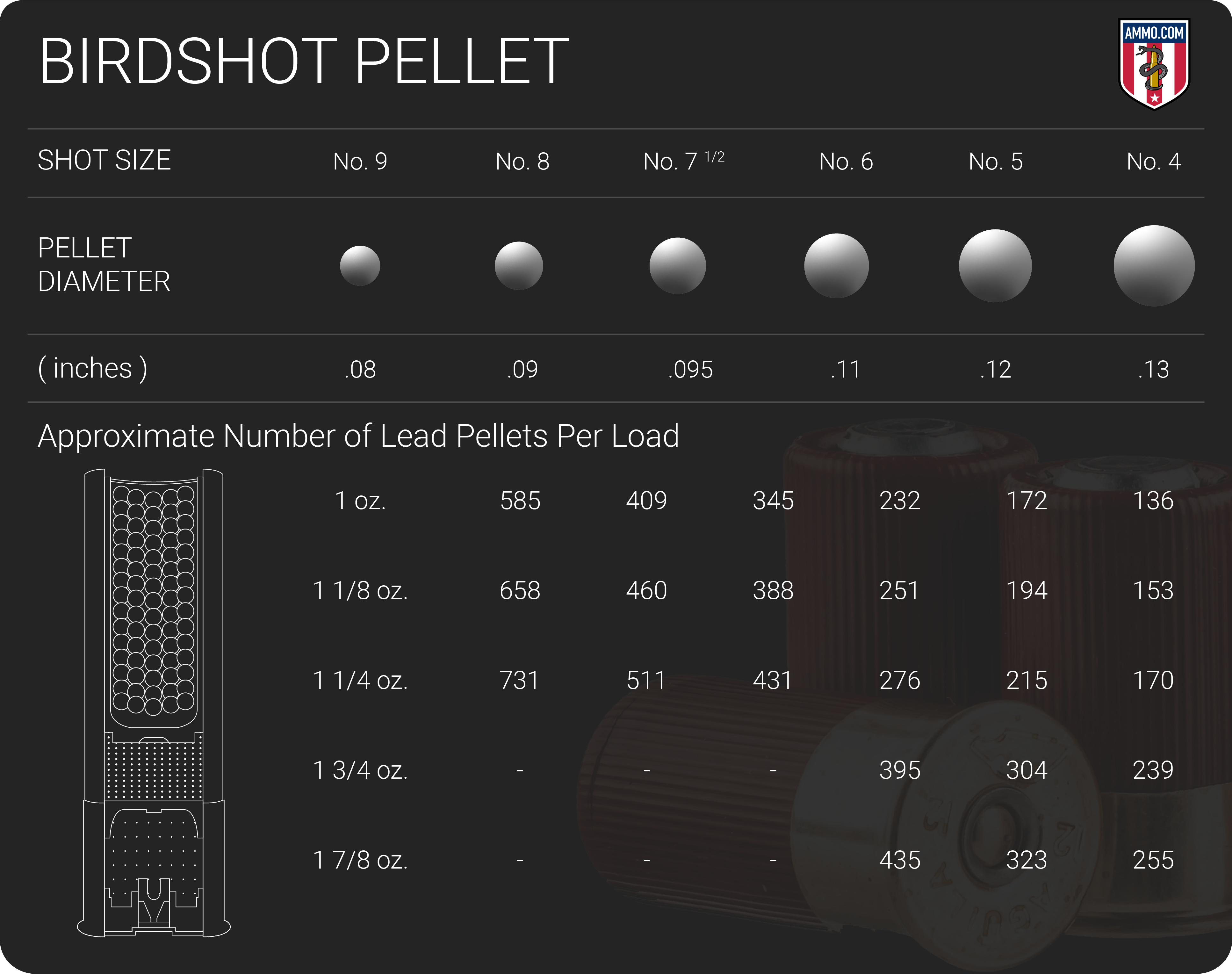
Pellet shot size works on an inverse scale, just like shotgun gauge, meaning that the larger the shot number, the smaller the pellet size. For example, #5 shot is larger than #8 shot. The most common birdshot sizes you’ll see at the ammo counter are 7, 7 ½, 8, and 9 which can be used for bird hunting and sporting clays.
Although some birdshot loads can carry well over 500 pellets, these lightweight projectiles don’t carry a lot of kinetic energy. Although perfect for felling birds or bursting clay pigeons, they are less effective on large game or in self-defense.
For that you’ll need something with a bit more oomph behind it…like buckshot.
Buckshot, like its name suggests, was designed for hunting medium to larger game. As a “buck” is a term for a male deer, buckshot was primarily designed for whitetail hunting.
Buckshot fires larger pellets but fewer of them. Furthermore, they are often loaded with more powder than birdshot, giving them higher recoil but increased penetration and range. However, unlike birdshot, buckshot typically has a tighter pattern as you want all that stopping power put into a smaller area to harvest big game.
Just like with birdshot, buckshot gauge is measured in reverse. This means that No. 4 Buck will be smaller than No. 1 Buck.
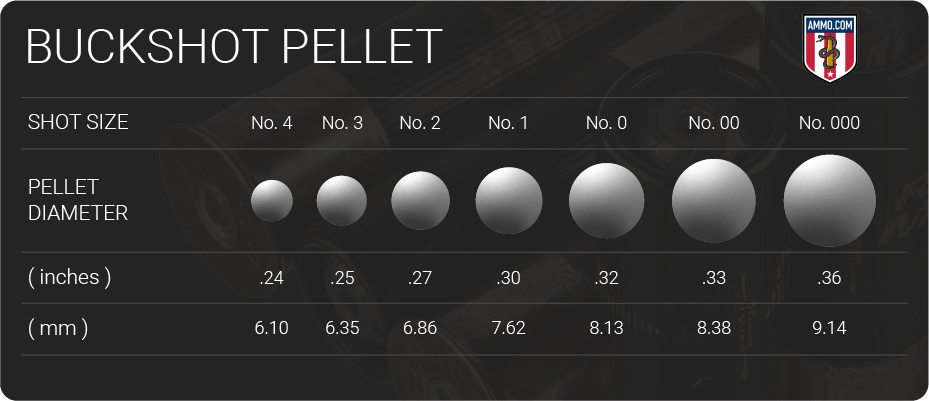
Buckshot is typically not used on birds or small game due to the amount of kinetic energy it carries. Using buckshot on a bird is considered, by many, unethical and typically renders the majority of the meat inedible.
Although buckshot might not be the best choice for bird hunting, its widespread use by law enforcement has led many homeowners to rely on a home defense shotgun loaded buckshot shells for protection.
Why are 20 Gauge Shotshells Yellow?
One thing you might notice is that virtually every 20 gauge shotshell is colored yellow. This is done to prevent them from being confused with 12 gauge shotgun ammo.
If a 20 gauge shotshell we accidentally loaded into a 12 gauge shotgun, a 12-gauge shell loaded behind could cause the 20-gauge shell to fire inside the magazine causing catastrophic damage to the firearm and potentially the shooter.
Although there is not an industry mandate that all 20-gauge shotgun ammo be yellow, most every manufacturer holds to this unofficial standard.
To learn more about how 12 gauge compares to 20 gauge, check out this article: 12 Gauge vs 20 Gauge.
What Shotgun Ammo Should You Buy? Buckshot vs Birdshot vs Slugs
Now that you have a better understanding of what types of 20 gauge shotgun shells are available, let’s talk about what you should be loading into your scatter gun.
For general target shooting, sporting clays, or upland game, you’re going to want to get some game loads or bird shot. This type of shotgun ammo has low recoil and fires a lot of tiny pellets to give you a good pattern and the highest probability of hitting your target. These loads are typically filled with #7-1/2, #8, or #9 shot and can be bought in bulk from companies like Rio, Fiocchi, Remington, Winchester, and Federal.
For home defense, buckshot is the best choice. A typical 20-gauge shotshell filled with #3 buckshot will contain around 20 pellets. This means when you squeeze the trigger, you are essentially firing the equivalent of twenty 0.25” caliber bullets at the same time. That will stop just about any threat pretty quickly if you ask me! Multiple pellets also have the added advantage of increasing your chances of hitting vital organs to incapacitate a bad guy as quickly as possible.
For deer hunting, slugs are your best friend. Although buckshot was designed for big game hunting, many states and territories prohibit its use for this purpose. This is because at longer ranges, buckshot spreads out and increases the potential for only wounding a deer. Slugs, on the other hand, provide hunters with higher levels of accuracy at longer ranges and focus all the shotgun’s power into a single point. Slugs increase stopping power and reduces the potential for merely wounding the animal.
Shotgun slugs can be used for home defense, however over-penetration is a big problem. A 20-gauge shotgun slug is great when hunting in the woods where over-penetration doesn’t really matter, but indoors you need to consider the safety of your family members. A 20-gauge slug will typically have no issues passing through any would-be home invader and several layers of drywall behind them, possibly hitting an innocent bystander or a loved one. Therefore, it is our recommendation that buckshot should be primarily used for home defense over slugs.
Now that you know which shotgun ammo to buy, let’s get back to our Top 5 List of the best 20 gauge ammo available by clicking HERE!








![Air gun 101: The differences between .177 & .22 – Which jobs they do best ? [Infographic]](https://airgunmaniac.b-cdn.net/wp-content/uploads/2024/11/1773-218x150.jpeg)
















